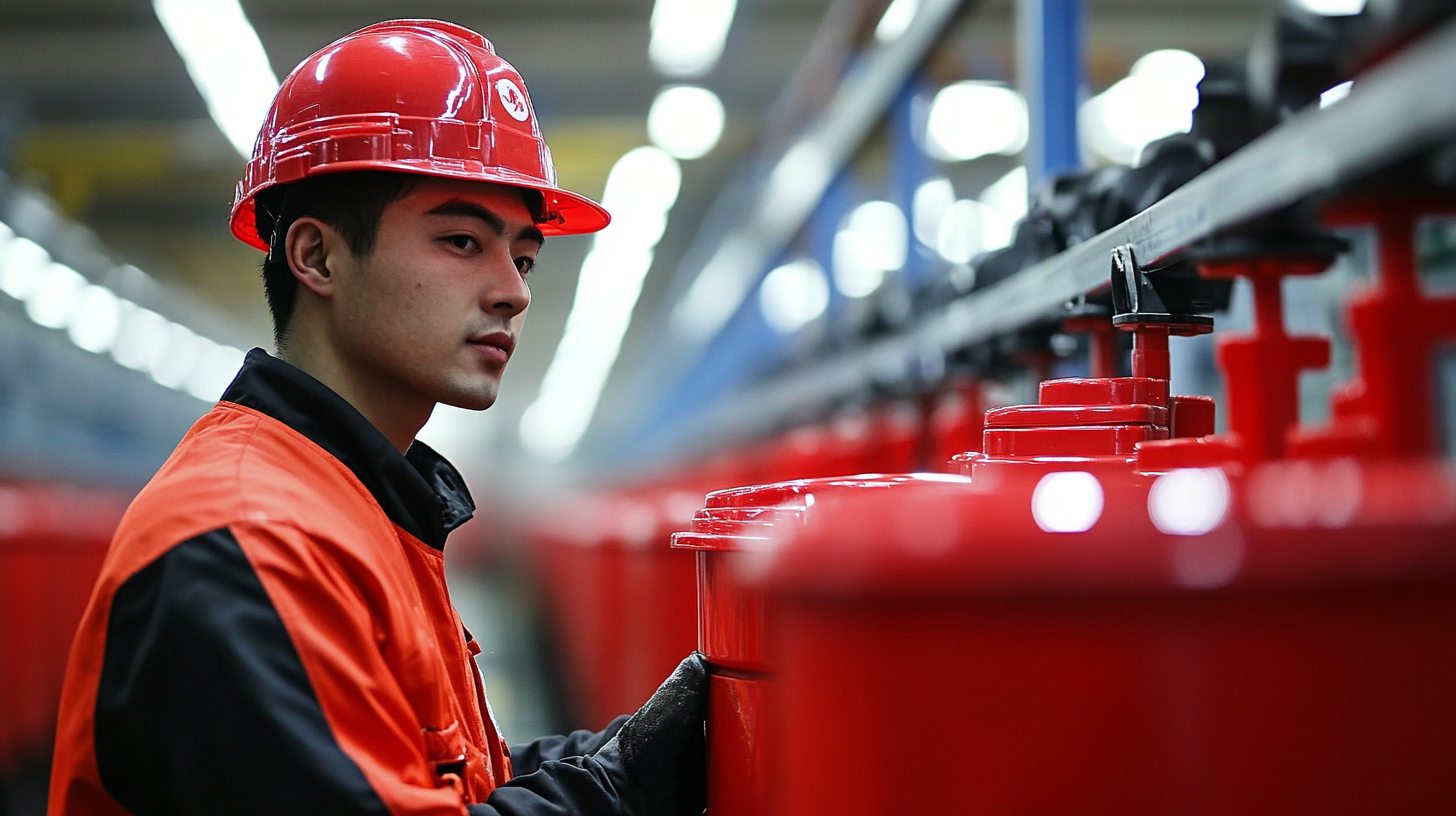 +86 13794985240
+86 13794985240
Leave Your Message
-
 CONTACT NUMBER
CONTACT NUMBER -
 CONTACT NUMBER
CONTACT NUMBER -
 CONTACT NUMBER
CONTACT NUMBER



In the face of escalating tariffs between the United States and China, the Chinese manufacturing sector has displayed remarkable resilience and growth, particularly in niche markets such as heavy machinery components. According to a recent report from Deloitte, Chinese manufacturing output is projected to grow by 5.1% annually, driven by advancements in technology and increased investment in automation. Among the key products witnessing heightened demand are Bucket Teeth, critical components essential for excavators and other heavy machinery used in construction and mining. Data from the International Trade Administration indicates that the global market for bucket teeth is expected to reach approximately $1.1 billion by 2025, with significant contributions from Chinese manufacturers. This growth not only underscores the adaptability of Chinese manufacturing in a challenging geopolitical landscape but also highlights its capacity to meet the evolving needs of industries worldwide, showcasing a blend of quality and cost-effectiveness that continues to attract international buyers.

China’s manufacturing sector has shown remarkable resilience amid the ongoing tariff battle with the U.S. Despite the challenges posed by elevated tariffs, manufacturers in China continue to innovate and adapt, utilizing advanced technologies and refined operational strategies. This tenacity has enabled them to maintain growth and competitive pricing, particularly in sectors such as machinery and automotive components, where high-quality outputs are crucial.
**Tips for Manufacturers:** To thrive in a challenging landscape, it’s essential to invest in automation and digital transformation. Embracing Industry 4.0 technologies allows manufacturers to enhance efficiency, reduce costs, and improve product quality. Furthermore, diversifying supply chains can mitigate risks associated with tariffs and trade tensions, enabling businesses to remain agile and responsive to market demands.
Another crucial strategy lies in fostering strong international partnerships. Collaboration with foreign companies not only opens up new markets but also facilitates knowledge sharing and technological exchange. Establishing joint ventures or alliances can provide access to innovative practices and resources, ultimately reinforcing the resilience of the manufacturing base in China amidst external pressures.

The ongoing US-China tariff battle has significantly reshaped global supply chains and manufacturing costs, with many companies seeking to navigate the complexities introduced by elevated tariffs. According to a report from the Peterson Institute for International Economics, tariffs imposed on Chinese goods have disrupted supply chains, leading to increased raw material costs for manufacturers. For instance, manufacturers in the automotive and electronics sectors have reported a surge in prices, as they grapple with tariffs that have increased costs by nearly 20% on average for affected products.
Moreover, companies are increasingly diversifying their supply chains to mitigate risks associated with tariffs. A survey by Deloitte revealed that more than 60% of manufacturers are considering relocating parts of their supply chains to countries like Vietnam and Mexico to reduce their exposure to US tariffs. This trend is not only changing the dynamics of manufacturing locations but is also impacting global logistics costs. Recent data from the World Bank shows that logistics costs as a percentage of GDP have risen from 11% in 2018 to nearly 13% in 2022, as businesses adapt to new tariff realities. Such adaptations underscore the significant impact of tariff policies on global manufacturing and trade.
As the U.S.-China tariff battle escalates, Chinese manufacturers are finding innovative ways to adapt and thrive amidst the pressures. One effective strategy is diversification, enabling these companies to mitigate risks and explore new market opportunities. By broadening their product ranges and targeting different industries, they are not just reducing dependency on the U.S. market but are also enhancing resilience against fluctuating tariffs. For instance, manufacturers of bucket teeth, essential for heavy machinery, are expanding their offerings to cater to sectors like construction and agriculture, which are less susceptible to tariff impacts.
Moreover, investing in technology and automation has become a hallmark of adaptation. Chinese manufacturers are leveraging advanced manufacturing techniques and smart technologies to improve efficiency and competitiveness. This shift not only helps drive down production costs but also meets the growing demand for high-quality, durable products in global markets. By embracing innovation and seeking out partnerships in emerging markets, these manufacturers are positioning themselves to navigate the complexities of international trade while maintaining robust growth in the face of adversity.

In recent years, the Chinese manufacturing sector has showcased its resilience and adaptability, particularly in the face of escalating tariff challenges from the United States. Among the innovations emerging from this dynamic landscape are improvements in bucket teeth manufacturing, a crucial component for heavy machinery. The focus on enhancing durability and performance of these parts not only reflects a response to international market pressures but also demonstrates China's commitment to advancing its industrial capabilities.
Chinese manufacturers have invested heavily in research and development to create best-in-class bucket teeth that can withstand harsh operating conditions while maintaining cost-effectiveness. Innovations such as advanced alloy materials and precision engineering techniques have been instrumental in producing bucket teeth that offer extended lifespan and enhanced efficiency. This dedication to innovation not only enables local companies to compete globally but also positions them as key players in the reconstruction of supply chains impacted by tariffs. The ability to pivot and innovate amidst challenges highlights the strategic direction Chinese manufacturing is taking, emphasizing the importance of quality and performance in an increasingly competitive market.
This chart represents the trend of China's Manufacturing Purchasing Managers' Index (PMI) from 2018 to 2023, highlighting the resilience of the manufacturing sector amid ongoing US-China tariff battles.
Despite ongoing trade tensions and the US-China tariff battle, China's manufacturing sector continues to show remarkable resilience and growth. Recent market trends indicate a significant rise in China's manufacturing exports, highlighting the adaptability of Chinese companies in navigating the challenges posed by tariffs. Innovative manufacturing techniques and strong supply chain networks have allowed Chinese manufacturers to remain competitive on the global stage.
One of the key drivers of this export growth is the relentless pursuit of quality and the introduction of specialized products, such as high-performance bucket teeth for construction and mining equipment. This focus on superior manufacturing standards not only caters to international demand but also establishes Chinese manufacturers as reliable partners in various industries. Consequently, the shift towards high-value, durable products has empowered China's export strategy, enabling it to withstand external economic pressures while simultaneously expanding its market reach.
